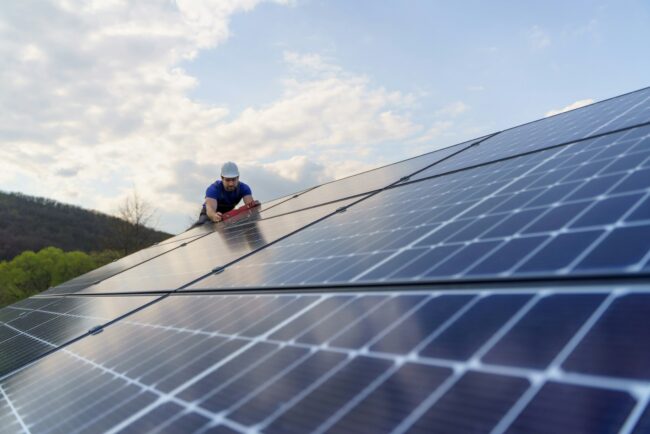In an era where climate change and energy efficiency dominate global conversations, net-zero homes are emerging as a revolutionary force in sustainable living. Unlike conventional homes, which rely on external energy sources and contribute to greenhouse gas emissions, net-zero homes generate as much energy as they consume. This is achieved through a combination of renewable energy production, high-efficiency appliances, and advanced insulation techniques. The transition to net-zero housing is not just a trend but a necessary step toward reducing our environmental footprint while ensuring long-term economic benefits for homeowners.

Governments, architects, and eco-conscious buyers are increasingly recognizing the potential of net-zero homes. Stricter building codes, incentives for renewable energy adoption, and advancements in green building materials are making it easier for homeowners to invest in energy-efficient living. As a result, what was once a niche market for sustainability enthusiasts is now gaining mainstream traction. The rise of net-zero homes signifies a paradigm shift, one that aligns economic savings with environmental responsibility, making sustainable living more accessible than ever before.
Net-Zero Living
At the heart of a net-zero home lies an intricate synergy between energy conservation and energy generation. These homes employ passive design principles to maximize natural light, optimize heating and cooling, and reduce overall energy demand. High-performance insulation, airtight construction, and triple-pane windows further contribute to minimizing energy waste. On the energy generation front, solar panels remain the most popular choice, but advancements in wind turbines and geothermal systems are expanding homeowners’ options.
Energy-efficient appliances, smart home technology, and advanced HVAC systems play pivotal roles in maintaining a net-zero energy balance. For instance, heat recovery ventilators (HRVs) and energy recovery ventilators (ERVs) ensure optimal indoor air quality while reducing heating and cooling loads. Additionally, water-efficient fixtures, rainwater harvesting systems, and greywater recycling add another layer of sustainability to these homes. The science behind net-zero living is a harmonious blend of innovation and efficiency, proving that comfort and sustainability are not mutually exclusive.
Benefits of Investing in a Net-Zero Home
Beyond their environmental impact, net-zero homes offer significant financial advantages. While the initial construction or retrofitting costs may be higher than traditional homes, the long-term savings in utility bills offset these expenses. A net-zero home essentially eliminates electricity costs, as homeowners generate their own energy. With the increasing cost of conventional energy and the availability of tax incentives, rebates, and mortgage discounts for green homes, the financial argument for net-zero living becomes even stronger.
Net-zero homes not only promote sustainable living but also command higher property values and sell faster than traditional houses. As more real estate investors and environmentally conscious individuals embrace energy-efficient lifestyles, the demand for these eco-friendly homes is skyrocketing. Those looking to sell their property can consider Fair Sale Homes, a seamless way to secure a cash deal and move toward a greener future. With sustainability driving real estate trends, net-zero homes are emerging as a smart choice for modern homeowners and forward-thinking investors.
Is Net-Zero Living for Everyone?
Despite their numerous advantages, net-zero homes do come with certain challenges. High upfront costs, limited contractor expertise, and the need for specific geographical conditions to optimize renewable energy sources can make adoption difficult for some homeowners. Moreover, existing infrastructure and zoning laws in many regions are not yet fully aligned with the net-zero movement, creating bureaucratic hurdles for those looking to build or retrofit their homes.
However, these challenges are steadily being addressed through technological advancements and policy changes. Government incentives, green financing options, and increased consumer demand are driving the cost of renewable energy systems downward. Additionally, educational initiatives and training programs for builders and architects are expanding the expertise required to construct these cutting-edge homes. As the net-zero movement gains momentum, it is only a matter of time before these homes become a standard in residential construction.
The Future of Net-Zero Homes
The trajectory of net-zero homes is clear: they are not just a passing trend but the future of sustainable living. As global initiatives push for carbon neutrality and cities aim for energy-efficient urban planning, net-zero homes will play a crucial role in achieving these goals. With continued advancements in renewable energy technology, smart home innovations, and green building materials, net-zero living will become more affordable and accessible to the average homeowner.
In the coming years, we can expect a surge in net-zero communities, where entire neighborhoods operate on sustainable energy models. Governments and private enterprises are already investing in large-scale projects that promote self-sustaining, eco-friendly residential developments. The convergence of sustainability, technology, and consumer demand is paving the way for a future where net-zero homes are not just an option but a necessity. As homeowners become more conscious of their environmental impact and financial savings, net-zero living is set to redefine the way we think about housing, one energy-efficient home at a time.
